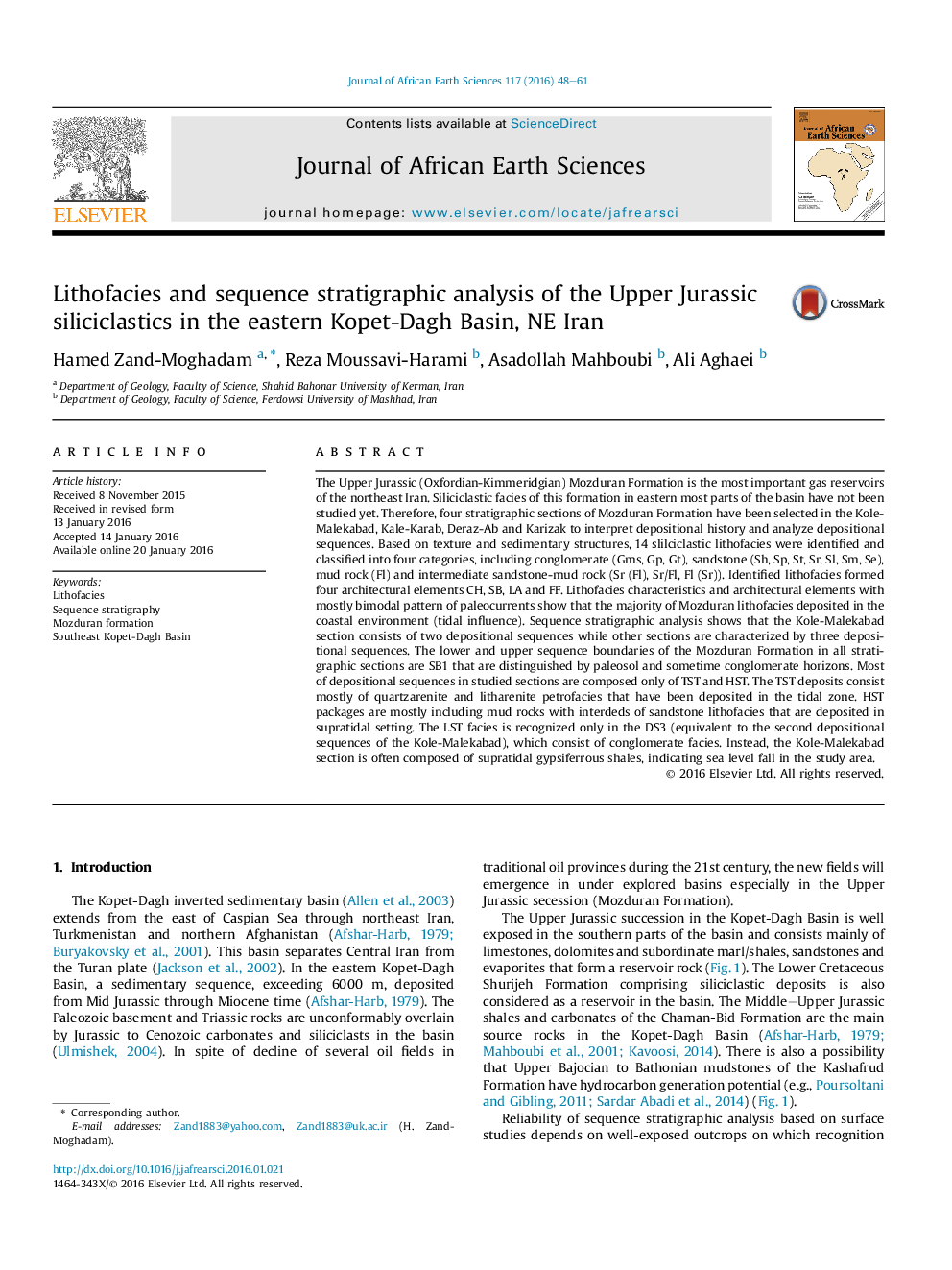| کد مقاله | کد نشریه | سال انتشار | مقاله انگلیسی | نسخه تمام متن |
|---|---|---|---|---|
| 4728314 | 1640191 | 2016 | 14 صفحه PDF | دانلود رایگان |
• The Mozduran Formation (Upper Jurassic) in the eastern part of the Kopet-Dagh Basin (NE Iran) consists of siliciclastic rocks.
• Facies analysis led to identification of 14 lithofacies, classified into four categories.
• These lithofacies shows that study rocks have been deposited in tide-dominated coastal environment and sometimes delta environments.
• Sequence stratigraphy analysis shows that study deposits were formed during five stages of sea level changes.
The Upper Jurassic (Oxfordian-Kimmeridgian) Mozduran Formation is the most important gas reservoirs of the northeast Iran. Siliciclastic facies of this formation in eastern most parts of the basin have not been studied yet. Therefore, four stratigraphic sections of Mozduran Formation have been selected in the Kole-Malekabad, Kale-Karab, Deraz-Ab and Karizak to interpret depositional history and analyze depositional sequences. Based on texture and sedimentary structures, 14 slilciclastic lithofacies were identified and classified into four categories, including conglomerate (Gms, Gp, Gt), sandstone (Sh, Sp, St, Sr, Sl, Sm, Se), mud rock (Fl) and intermediate sandstone-mud rock (Sr (Fl), Sr/Fl, Fl (Sr)). Identified lithofacies formed four architectural elements CH, SB, LA and FF. Lithofacies characteristics and architectural elements with mostly bimodal pattern of paleocurrents show that the majority of Mozduran lithofacies deposited in the coastal environment (tidal influence). Sequence stratigraphic analysis shows that the Kole-Malekabad section consists of two depositional sequences while other sections are characterized by three depositional sequences. The lower and upper sequence boundaries of the Mozduran Formation in all stratigraphic sections are SB1 that are distinguished by paleosol and sometime conglomerate horizons. Most of depositional sequences in studied sections are composed only of TST and HST. The TST deposits consist mostly of quartzarenite and litharenite petrofacies that have been deposited in the tidal zone. HST packages are mostly including mud rocks with interdeds of sandstone lithofacies that are deposited in supratidal setting. The LST facies is recognized only in the DS3 (equivalent to the second depositional sequences of the Kole-Malekabad), which consist of conglomerate facies. Instead, the Kole-Malekabad section is often composed of supratidal gypsiferrous shales, indicating sea level fall in the study area.
Journal: Journal of African Earth Sciences - Volume 117, May 2016, Pages 48–61
